#mediterranean mythology
Explore tagged Tumblr posts
Text









H E R M E S - Divine shepherd, pastor of herdsmen and heralds, quick-witted assistant of men. God of chance and lucky draw, he who oversees rustic divination and pastoral music of the countrymen.
Hermes is a lot of things, ever caught in-between the world of the living and the land of the dead. A friend, a guide, a companion on the windy roads. A hero of many stories, a messenger within many myths, a bringer of friendly havoc and a disobedient child.
🕊️ / 🕊️ / 🕊️ 🕊️ / 🕊️ / 🕊️ 🕊️ / 🕊️ / 🕊️
P. S. Gif overlay/editing by me. I have posted it before.
#HERMES 💌#Aesthetics for the sake of aesthetics; not meant to be a devotional post.#I don't think I can source those hares :/#The bust is Mercury in the British Museum.#greek mythology#ancient mythology#mediterranean mythology#mediterranean gods#greek gods#hermes#my aesthetic
23 notes
·
View notes
Text
Was curious how far Ithaca was from troy today while listening to epic the musical and rereading the illiad and I found this map
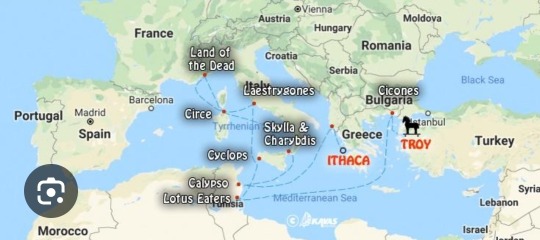
I think odysseus would have been better just to walk😭
#HE WENT ALL THE WAY TO FRANCE???????#BRO THATS FARTHER THEN THE STUPID MEDITERRANEAN CRUISE IM GOING ON IN A FEW MONTHS#BRUH WHAT#NO WONDERS IT TOOK HIM 3 YEARS#the odyssey#epic musical#epic odysseus#odysseus#epic the musical#greek mythology
60K notes
·
View notes
Text
youtube
Unlocking the Mystery of Cerberus: The Many Faces of Fear
Did you know that Cerberus was much more than just a guardian? Dive into his legendary tale!
Uncover the extraordinary story of Cerberus, the fearsome three-headed dog who guarded the gates of Hades. This video delves into his origins, his incredible abilities, and his pivotal role in Greek mythology.
We’ll explore the legends surrounding him, from his birth to Echidna and Typhon, to his terrifying appearance and eternal bond with Hades, the god of the underworld. Additionally, we’ll discuss the epic clash between Cerberus and Heracles, the only hero to challenge and subdue him. Cerberus was not only a symbol of strength but also a representation of the boundary between life and death, a figure that inspired fear even among the gods. Discover how the myth of Cerberus has influenced stories and legends throughout the centuries. This video provides unique insights into Cerberus's origins and role, revealing lesser-known aspects and surprising details.
#Cerberus#Echidna#Greek Mythology#Greek legends#Greek mythology#Greek myths#Hades#Hades and Cerberus#Heracles#Mediterranean mythology#Typhon#ancient legends#battle of Heracles.#cerberus#cerberus explained#classical mythology#greek mythology#greek mythology cerberus#guardian of Hades#history of Cerberus#myth of Cerberus#mythology#twelfth labor of Heracles#what is cerberus#who is cerberus#Youtube
0 notes
Text
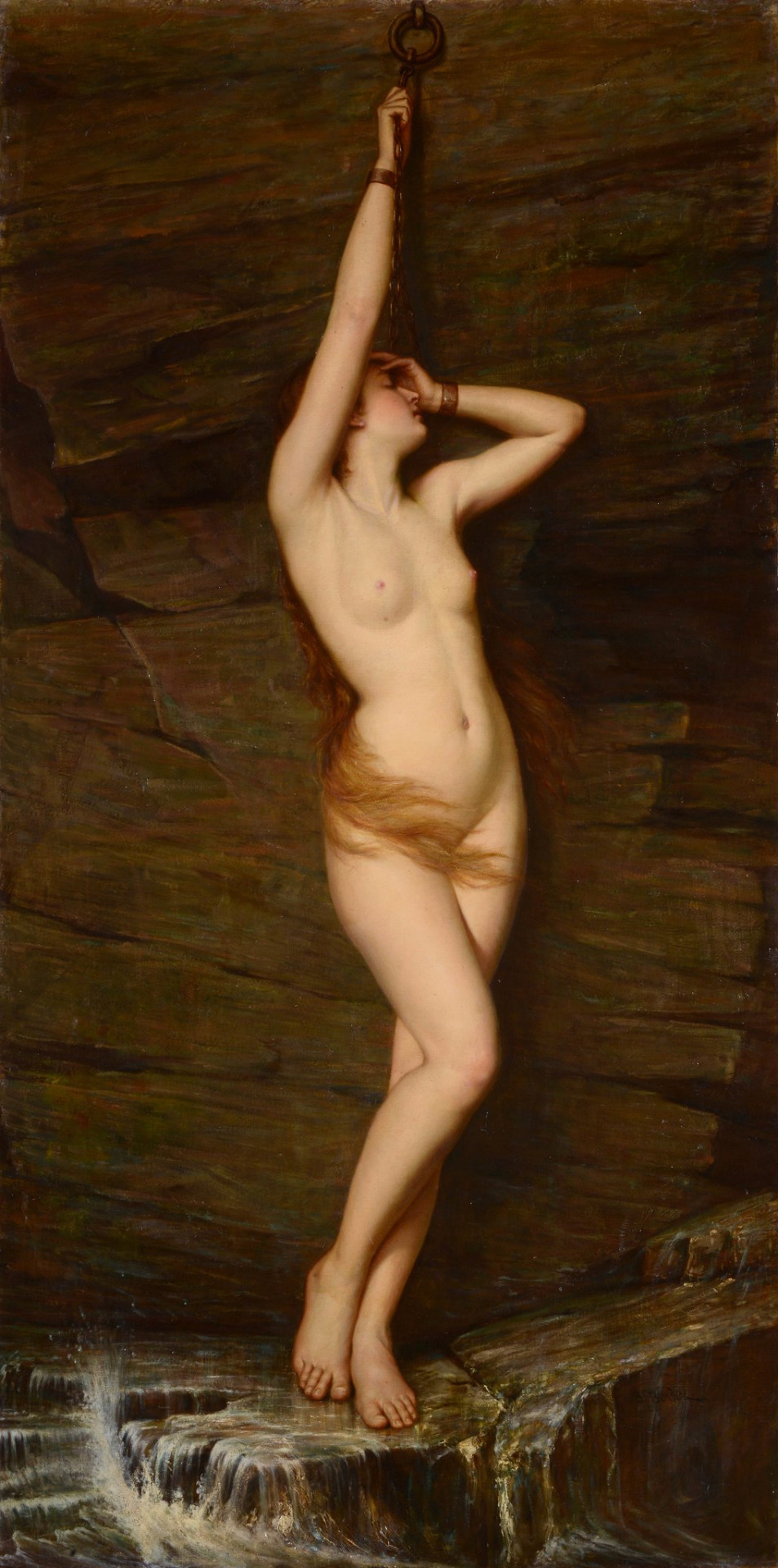
Vlaho Bukovac (Croatian, 1855-1922) Andromeda, n.d. National Gallery of Slovenia
#Vlaho Bukovac#Croatian#1800s#Andromeda#art#fine art#european art#classical art#europe#european#fine arts#oil painting#europa#croatia#croatian#croatian art#slovenia#greek mythology#mythological#mythological art#myth#mediterranean#western civilization
5K notes
·
View notes
Text

Odysseus and Telemachus Slaughter the Suitors of Penelope
#odysseus#telemachus#the suitors#the odyssey#homer#greek mythology#suitors of penelope#art#europe#european#classical antiquity#ancient greek#ancient greece#mediterranean
613 notes
·
View notes
Text

Olives...
#greece#history#ancient#ancient history#ancient greece#ancient greek mythology#lovely#architecture#olive leaves#olives#aesthetic#light academia#light acamedia#olive tree#olive#olive branch#plants#plantcore#mediterranean
149 notes
·
View notes
Text
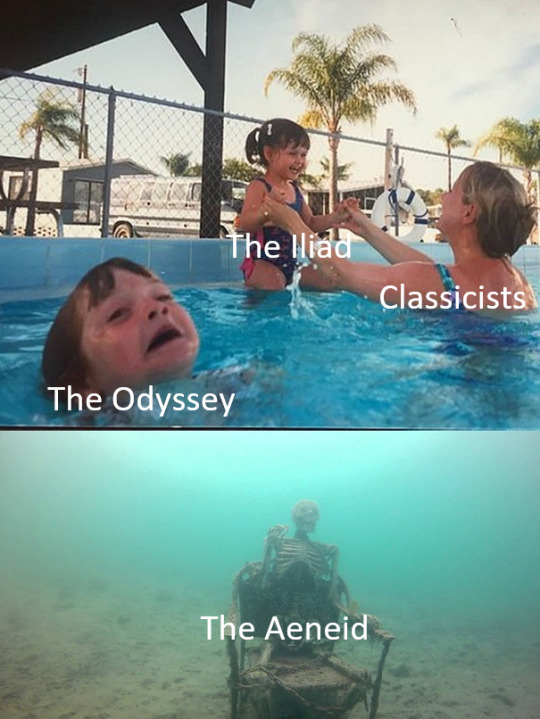
#iliad#odyssey#aeneid#virgil#homer the poet#homer's iliad#homer's odyssey#virgil's aeneid#classical civilisation#classics#greek gods#roman gods#greek mythology#roman mythology#greeks#romans#epics#homeric epics#virgils epic#classical mythology#roman classics#classical history#mediterranean history#ancient history#ancient greek#ancient greece#ancient rome#classics meme#classics memes#tagamemnon
494 notes
·
View notes
Text

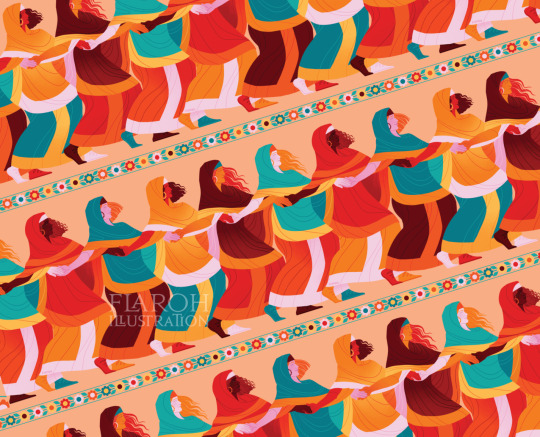
Dancing through the eras ✨👭🏺 Happy #WomensEqualityDay everyone!🧡 Today I'm thinking of all the women of the Ancient Mediterranean, whose lives and dreams we still continue to learn about today with every discovery✨
#womens equality day#magna grecia#tagamemnon#flaroh illustration#ancient history#art history#ancient greece#greek mythology#ancient mediterranean#tomb of the dancers
476 notes
·
View notes
Text









A walk in the historical centre of Athens
Photos by Vera Bousiou
#athens#greece#photography#nikonphotography#beauty#historical centre#walk#point of view#blue sky#mediterranean#ancient greece#mythology#art#the acropolis#architecture#landscape#archaeology
67 notes
·
View notes
Text

Penelope aesthetic
#penelope of ithaca#greek mythology#the odyssey#odysseus#odypen#young penelope#aesthetic#epic the musical#tagamemnon#mediterranean aesthetic#telemachus#baby telemachus#weaving#naiad daughter#ducks#moodboard#penelope moodboard#making baby telemachus#weaving the shroud#olive tree#ithaca
52 notes
·
View notes
Text
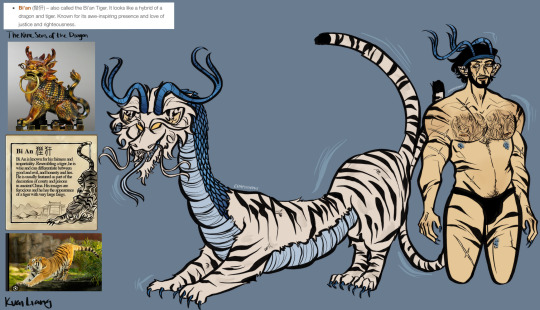
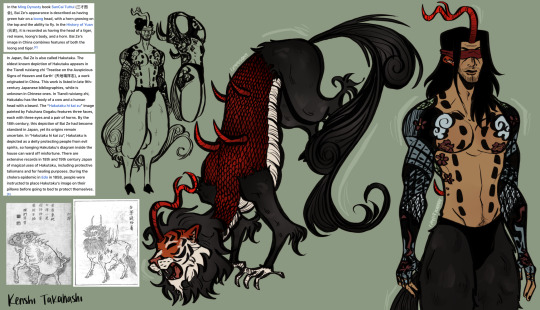

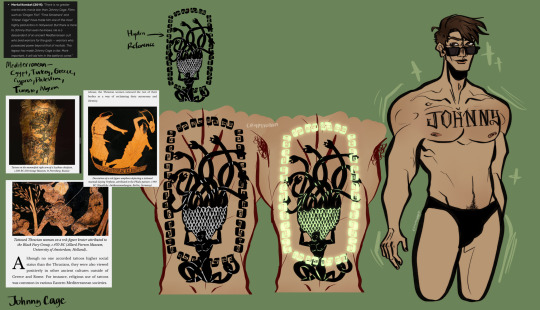
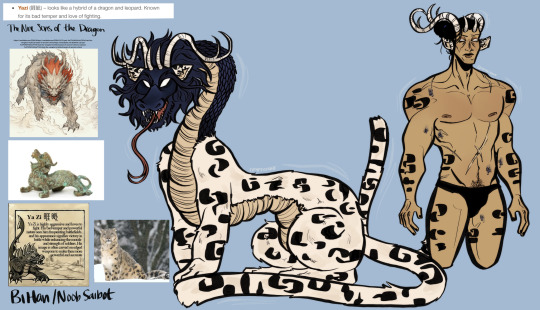
✨ MORTAL KOMBAT MYTHOS AU ✨
Bi Han and Kuai -Nine sons of the dragon
Bi Han (yàzí or Ya Zi)
Kuai Liang (Bi An)
Hanzo (shinigami)
Kenshi (Hakutaku/ Bai Ze)
Johnny (the descendants of Mediterranean cult —Demi god es que)
I was genuinely so excited to do this!! I don’t really draw creatures, dragons, etc often so this was was a serious art exercise
#my art#cryptidbait#fanart#mk#mortal kombat#gamer#fandom#MKX#mk11#mortal kombat 11#Kuai Liang#hanzo hasashi#johnny cage#kenshi takahashi#bi han#noob saibot#subzero#scorpion#mythology#mythical creatures#greek mythology#chinese mythology#japanese mythology#mediterranean#cult#mythology au#au
90 notes
·
View notes
Text
Ok so like… on the topic of casting none Greek actors in Greek mythology adaptation, I feel like we don’t consider enough that there are tons of explicitly none Greek characters in the mythology, who either get ignored or whitewashed (and I’m not just talking about Andromeda) and how these casting directors seem only to care to reflect the diversity of America, rather than the diversity of the Mediterranean and Greek mythology as a whole. So it leads to uninspired casting.
Like… cast a Georgian actress for Medea, her foreignness is essential to her character.
Cast a Palestinian actress for Andromeda (since her kingdom is sometimes placed in Jaffa, Palestine)
Cast a Lebanese actress for Europa
Cast a black actor for Memnon
Cast Turkish actors for the Trojans
Cast Egyptian actors for the countless Egyptian characters within myth like Aegyptus and his sons
Cast Moroccan actresses for the Hesperides
Hell, maybe be a bit silly and cast an Arab for Hermes since he’s the father of Arabius the ancestor of Arabs, I wouldn’t bat an eye if you cast an Iranian actor for Perseus or his son Perses since he’s is also said to be the ancestor of Persians.
But at the end of the day, maybe have at least some Greek writers and actors making these movies/shows? I’ve noticed they make them better lol
#greek mythology#ancient greek mythology#greek pantheon#greek tragedy#Perseus#andromeda#Medea#aegyptus#Hesperides#Hermes#Arabius#Perses#Persians#Egyptians#Mediterranean#memnon#Michael Cacoyannis
42 notes
·
View notes
Text
Sirens of Greek Myth Were Bird-Women, Not Mermaids
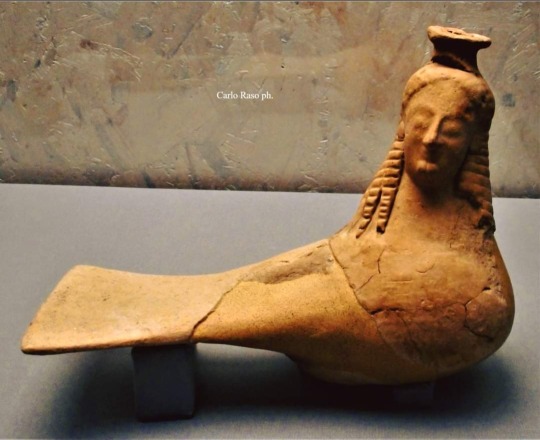
Bottle-askos in the shape of a siren (2nd half 6th century BC) from Locri / Southern Italy's Calabria. National Museum of Magna Graecia (Reggio Calabria, Italy).
In the wine-dark expanse of the Mediterranean Sea, far from the halls of civilization, there was once a small island—or so Homer, the famed poet of Ancient Greece, wrote in his epic The Odyssey. No buildings occupied its flowery meadows; no fisherman worked its shores. Those who passed in their black ships heard only voices, twining over the windless waves, singing a song that promised knowledge of all things. Once they heard it, they were enchanted; they had no choice but to land and seek out the singers. Those who did never left the island; their bodies remained, rotting amid the flowers, for none who heard the Sirens' song could escape it.
The story of the Sirens has inspired writers, poets, and artists for millennia. But somewhere along the way their form was confused. Today, Sirens are almost always represented as voluptuous mermaids, whose beauty and sexuality lure men to their deaths. But the Classical Greeks understood the Sirens differently: as bird-women, creatures that Mediterranean cultures traditionally associated with hidden knowledge.

Sirens first appear in the literary record with the Odyssey (written around 750 BCE) in a segment that’s much briefer than you’d think considering the cultural impact of these mystical, singing creatures. It goes like this: Odysseus, warned by the enchantress Circe of the danger posed by the Sirens’ song, orders his crew to stuff their ears with wax. But, curious to a fault, he has himself bound to the ship’s mast so he can listen without flinging himself into the sea. The Sirens promise him tales of all that had occurred during the war at Troy, and everywhere else besides; enchanted, he begs his crew to release him. He rants, raves, and threatens, but to no avail. His crew sails on until the song fades in the distance, and so saves his life.
Homer doesn’t describe the Sirens’ physical appearance in his epic poem, Wilson says. But in ceramic paintings and tomb sculptures from the time of writing, and centuries after, Sirens were usually depicted with taloned feet, feathered wings, and a beautiful human face. The bird-body of the Siren is significant to Wilson: In the eyes of traditional peoples all across Europe, birds were often graced with an otherworldliness associated with gods, spirits, and omens.

They inhabit the water, the air, and the earth. They’re also associated with song; they have voices that are not human voices, and kinds of movement that are not the same as human kinds of movement.
The Sirens’ role in tomb art is particularly telling. In ancient Mediterranean and Middle Eastern cultures—as far back as 7,000 years ago—birds were often depicted carrying spirits to the underworld. In Southern Italy's Calabria, archaeologists unearthed several Greek askos (unguentary vessel) in shape of sirens, most commonly found in tombs.
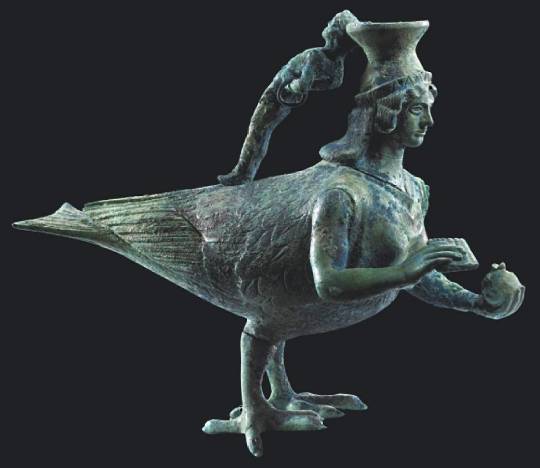
Bronze askos in the shape of a siren (5th century BC) from Crotone, Calabria, Italy - Archaeological Museum of Crotone.
Jump ahead a few millennia to 1,550 BCE, by which time Ba-birds, depictions of departing souls as human-faced birds, began appearing in Egypt. That connection between birds and dead souls seems to have then hopped over to Greece: Writing in the 5th century BCE, the playwright Euripides described the Sirens as at the beck and call of Persephone, one of the rulers of the underworld, while other writers identified the Sirens as rivals and dark echoes of the Muses, those goddesses of creativity.
These are the Sirens the Ancient Greeks would have recognized: bird creatures of the underworld, bridging the human world and what lies beyond. The Sirens—and their fateful songs—then offered a glimpse behind the veil, a chance to hear how earthly glories would echo in eternity. The question of what song the Sirens sing, what is this forbidden knowledge, what's wrong with it, what's the temptation—the text leaves a lot of open space there. Therein lies the seduction.
Yet today, mermaids or beautiful sea nymphs replace the dark, winged Sirens of ancient times.
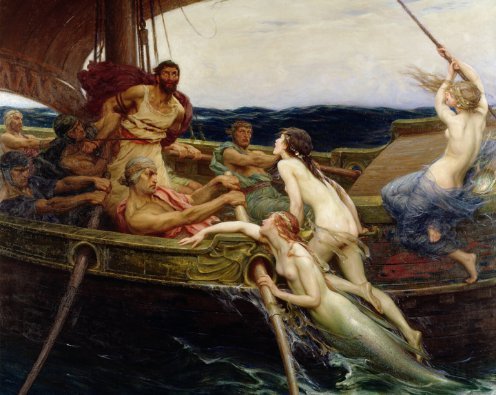
It is during the Middle Ages that the image of the siren began its shift from bird-woman to mermaid . With the transformation of the siren's image, the attributes associated with female monsters shifted. This suggests a change in the traits that were considered monstrous in women. The siren's movement from a frightening bird-woman to a beautiful mermaid represents female beauty becoming monstrous. Throughout the Middle Ages sirens increasingly represented a male fear of female seduction, suggesting a growing fear of female sexuality.
For medieval Christians, sirens were heavily associated with female sin.
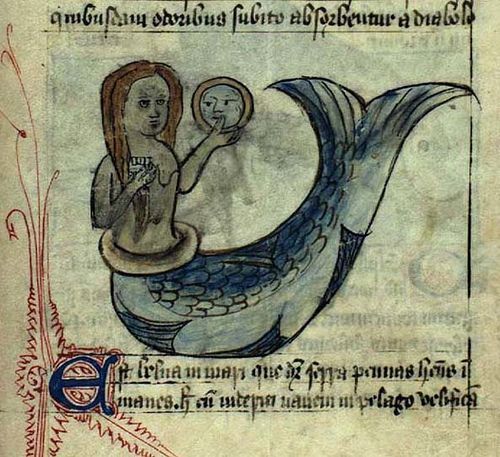
However it happened, the identification of Sirens with mermaids seems to have affected later translations of the Odyssey, and ultimately common knowledge of Sirens. Translators in the 19th and 20th centuries cast the Sirens in a sexualized light. In one prose translation, the Sirens speak of “the sweet voice from our lips,” despite the word στομάτων directly translating to the less sensual “mouths.” Another adds flowery descriptors of “each purling note/like honey twining/from our lips.” But unlike the Odyssey’s other island temptresses, Circe and Calypso, the Sirens get no admiring description of their faces or hair. Only their voice is described, and their field of bones and flowers.

That’s a pretty strong indicator that the Sirens are not meant to be read as offering a sexual temptation. You can kiss lips; mouths devour.
Folklore and mythology move on, given enough time. Today, the Siren is just another word for mermaid, and is likely to remain so. But there’s something richly thematic about the Sirens of Classical Greece that deserves to be remembered: in-between creatures on a lonely island, floating between the boundaries of life and death, and offering an irresistible song of both. Water-temptresses are a dime a dozen; the Sirens offer wisdom.
Follow us on Instagram, @calabria_mediterranea

#sirens#calabria#homer#italy#italia#south italy#southern italy#mediterranean#mediterranean sea#the odyssey#ancient greece#greek#greek art#art#terracotta#greek mythology#greek myth#underworld#mermaids#mythological creature#magna graecia#magna grecia#locri#folklore#mythology#siren#mermaid#crotone
116 notes
·
View notes
Text

Medes islets (Illes Medes), off the coast of L'Estartit in Comarques Gironines, Catalonia. Photo from Getty Images via Traveler.
According to local legends, the palace of the queen of mermaids is deep under these islets. The palace is made of glass and is entered through a cave made of pink coral.
People from Cap de Creus (the area where L'Estartit is) used to say that, every year around October, a special mermaid wakes up. She's different from the rest of her species because she's more beautiful and her singing voice is the sweetest and most harmonious that anyone will ever hear. But her songs can only be heard by fishermen and sailors, because she sings only for them.
#llegendes#illes medes#l'estartit#catalunya#fotografia#natura#sea#mediterranean#catalonia#travel#travel photography#legends#myth#mythology#mermaids#merfolk#folklore#faity tales#europe#mythical creatures
31 notes
·
View notes
Text

Charles Amable Lenoir (French, 1860-1926) The Death of Sappho, 1896
#Charles Amable Lenoir#French art#1800s#the death of sappho#art#fine art#european art#classical art#europe#european#fine arts#oil painting#europa#mediterranean#french#france#female nude#classical#painting#greek mythology#mythological art#mythology#arts
5K notes
·
View notes
Text

The House of Asterion by Piero Vettori
#minotaur#labyrinth#asterion#art#piero vettori#illustration#greek mythology#mythical creatures#crete#cretan#cretan bull#bull#maze#mazes#mediterranean#ancient greece#ancient greek#classical antiquity#jorge luis borges#monster#monsters#history#europe#european#house of asterion#the house of asterion
629 notes
·
View notes